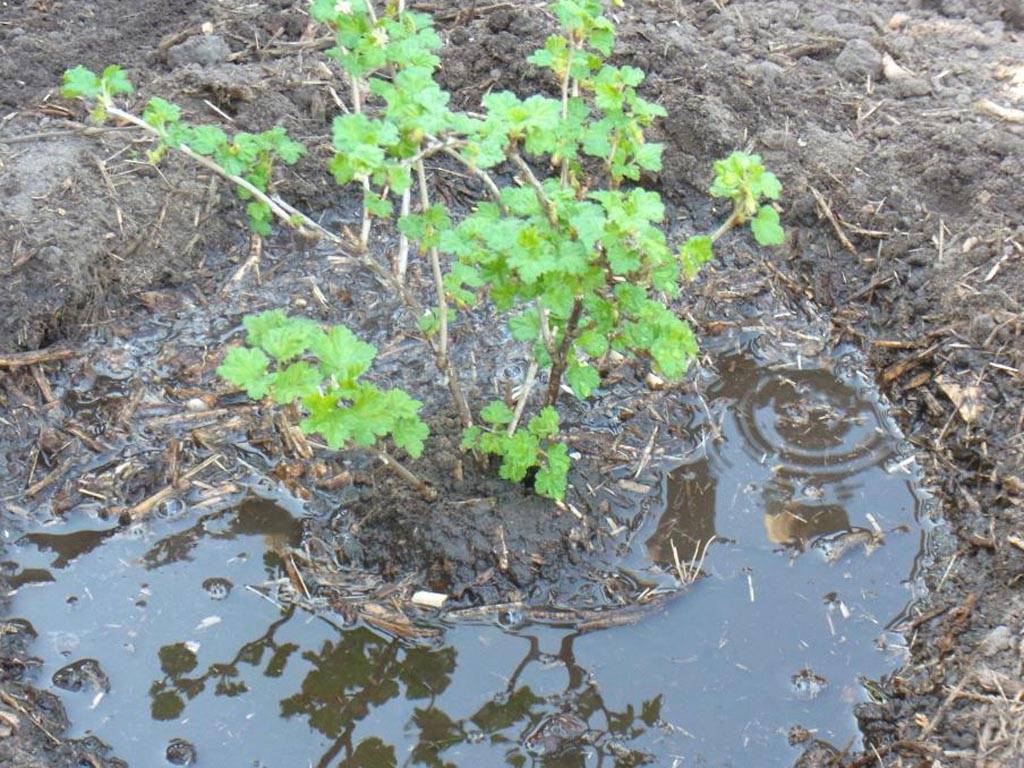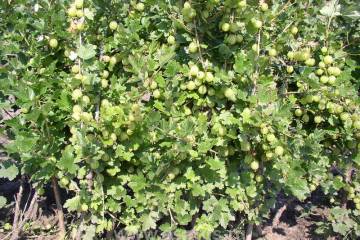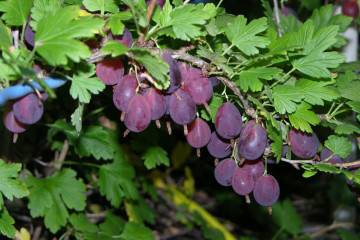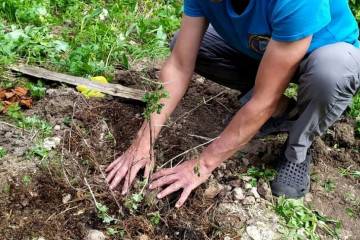How to Water Gooseberries in Summer - Best Ways to Water
Content:
You can decorate a summer cottage or a plot near the house with trees, flowers, shrubs and other plants. One of the most popular and demanded species is the gooseberry. Watering plays a huge role in creating a beautiful and well-kept garden. Agrus (the second name of the culture) pleases not only with green leaves, elastic stems, but also delicious fruits. Before planting a plant, you need to know how to water a gooseberry during summer, during and after flowering.
Brief description of gooseberry
Agrus is a perennial plant that belongs to the Gooseberry family. The shrub has a crown diameter and a height of 1 to 1.5 m. The tree has the shape of a bush with curved, spreading or straight stems. The aboveground part of the gooseberry consists of basal shoots and branches.
Fruit weight from 3 to 20 g, depending on the variety. The berries are oval and round in shape with small seeds inside. Their color can range from light green to red, dark purple and even almost black.
How water dependent are gooseberries
Compared to other fruit shrubs, summer gooseberries tolerate a temporary lack of moisture better, although the plant is quite demanding on soil moisture. With a lack of water, watering is carried out during the growth of stems and berries after flowering. In the hot season and drought, moisture is required at the stage of fruit formation.
Watering is mandatory in the fall from September to the first week of October, which will enhance the growth of the root system and protect the bush during wintering.
How much water does a healthy, formed plant consume?
One gooseberry bush normally accounts for 40-60 liters. The soil should be soaked at least 50 cm deep. This distance is related to the length of the plant's underground roots.
Features of watering young plants
In the first year after planting the gooseberry, gardeners should take care of the shrub, with particular attention to weed control and watering. During the season, it is necessary to carry out about 5 procedures. In order for the water to seep into the ground better, it is loosened to a depth of 4 cm. For the first 3 years, the shrubs should be irrigated regularly and top dressing should be periodically added.
Features of watering during flowering
After the winter season, the soil is dry and in the absence of rain, there is a risk of drying out the plant. During the flowering period, the gooseberries are moistened with lukewarm water in the morning and evening once a week. Up to 40 liters of water will have to be poured under a large shrub. With poor watering of gooseberries in summer and spring, the fruits will be small and with poor taste.
What threatens insufficient watering
With a lack of moisture, the plant deteriorates and development stops. This negatively affects the berries. Lack of water leads to yellowing and foliage falling off. Insufficient watering negatively affects not only the appearance of the plant, but also the plant's immunity.As a result, diseases begin to develop and the rhizome dry out, and recovery takes a long time.
What can happen to a plant when it is flooded
Excessive moisture leads to stunted growth of gooseberries due to the low air content in the soil. The reason for flooding is often the close occurrence of groundwater. A large amount of water impairs the vital activity of the microflora of the earth. Also, strong irrigation brings harmful substances, including salts, to the soil surface.
Preferred watering methods: their characteristics and advantages
Gooseberries can be watered in several ways - by irrigation ditch, drip method or under the root. Each of them has its own advantages and characteristics.
Drip irrigation
This is the most efficient and economical method for moisturizing gooseberries. On both sides of the plant bed, drip irrigation lines are laid, through which the nutrient solution or water flows out. The optimal distance from the bush to the pipes should be from 15 to 20 cm. Water comes in slowly, so it has time to warm up before irrigating the root system.
Irrigation with irrigation ditch
With this method of soil moistening, the consumption of water and time is less. For irrigation ditches, soil is poured 15 cm high along the perimeter of each bed at a distance of 35 cm from the bushes. A recess is formed around the rows, which is quickly and easily filled with water from a hose. Loosening of the soil is not necessary if the moat is carefully mulched.
Watering at the root with warm water after sunset
Outdoors, most crops can be moistened in the evening, but this is best done after sunset. This will avoid the formation of an earth crust, especially for heavy soil types. After sunset, the soil air cools, contracts, and fluid seeps into the underground pores faster. In the dark period of the day, the wind becomes weaker, evaporation decreases.
Spraying leaves
The foliage is irrigated only in the presence of pests, diseases, and only before bud break. The most popular ailments and insects are spheroteka or powdery mildew (fungal infection), anthracnose, gray rot, septoria, columnar or goblet rust, sawflies, moth, bear, mosaic. For spraying, special tools are used that fight this or that type of infection.
Other ways of watering
In addition to the above methods of moistening, they also use flood irrigation and sprinkling, but they have some disadvantages. After planting a shrub, it is worth choosing the most suitable watering method for better plant growth.
Sprinkling
This irrigation method is characterized by the installation of a spray system or the use of a conventional hose. But it has several disadvantages - high water consumption, the need to loosen the soil after each moistening. Sprinkling also leads to the development of many diseases due to excessive moisture on fruits and foliage.
Watering in an influx
The hose is lowered to the ground, and water flows freely, but it must be constantly moved from place to place. It is impossible to completely control the process, because the streams run in different directions, so it is difficult to water the soil evenly.
Watering gooseberries is one of the main bush care procedures. The appearance of the agrus, its general condition and yield depend on the degree and frequency of moisture. Berries contain many vitamins and nutrients. The bush is planted near the house, in the country, in the garden. Even novice gardeners should know how often to water gooseberries, currants, and other fruit and berry plants.



















